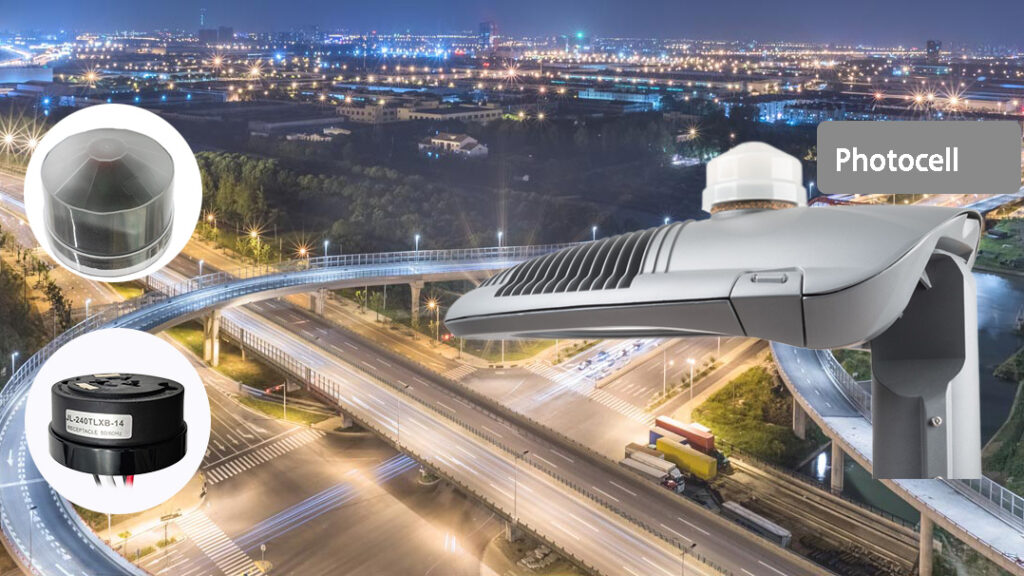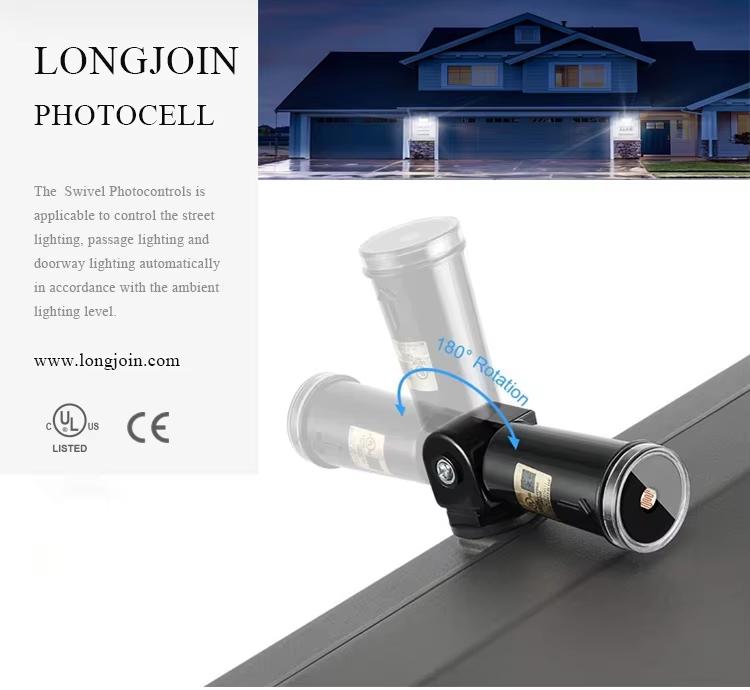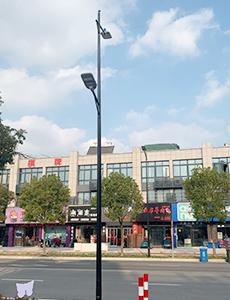Outline
- Introduction
- Automatic Detection
- Benefits of Remote Monitoring
- Integration with Smart City Infrastructure
- Case Studies
- Columbus, Ohio
- Nyack, New York
- Los Angeles, California
- Key Factors Contributing to Cost Savings
- Future Trends in Smart Street Lighting
- The Bottom Line
Cost is a primary factor impacting the decision-making of municipalities. Regarding streetlights, their maintenance is expensive and time-consuming. The primary cost-upticking factors are frequent bulb replacements, wiring faults, and manual inspections, which drive up costs.
Smart lighting solutions offer a game-changing alternative. They are equipped with light photocell sensors and automated photocontrols. This means they can detect faults instantly and adjust lighting levels based on real-time conditions. Further, their imparted remote monitoring eliminates the need for frequent physical checks, reducing maintenance trips.
In a nutshell, by optimizing energy use and extending component lifespan, smart lighting significantly lowers operational costs. As more cities adopt smart lighting, this article will be a comprehensive guide to how smart lighting systems can effectively lower operational costs in street lighting.

Automatic Detection
Smart street lighting systems utilize advanced light photocells. They include passive infrared, proximity, and photoelectric beam detectors. This helps monitor ambient conditions and detect anomalies. These photosensors also allow the system to recognize faults such as bulb failure, wire faults, or environmental variations in real-time.
For example, a voltage drop can signal a fault. This triggers an instant notification. Finally, active fault detection reduces downtime and provides consistent lighting. In addition, motion sensors can vary lighting brightness according to activity. This actually saves energy during low-traffic times.
The continuous analysis of data, thus, helps ensure that the systems work at their optimum and that any fault is identified immediately. The frequency of manual inspection would thereby be lowered.
Benefits of Remote Monitoring
Implementing remote monitoring in smart street lighting offers several advantages:
- Real-Time Monitoring: Operators have the ability to see the status of every light immediately. This permits quick identification and resolution of problems.
- Predictive Maintenance: With real-time data analysis, identifying potential failures becomes easy. This helps maintenance teams to act before such failures escalate into critical issues.
- Energy Optimization: Adjusting light intensities using real-time inputs keeps energy usage at a minimum. This effectively curtails the power wastage.
- Cost Reduction: Decreased manual inspections and targeted maintenance lower operational expenses.
- Enhanced Public Safety: Consistent and reliable lighting improves visibility. Also, the remote management of lighting contributes to safer urban environments.
Integration with Smart City Infrastructure
The modern-day cities are becoming smart. They have an intricate web of interconnected facilities, with the primary goal of promoting sustainability. At the core of this, smart lighting systems are effectively boosting urban service delivery standards.
A good example is the integration of photocells with traffic management systems. They offer real-time monitoring of traffic flow to minimize peak-time traffic congestion and jams. Additionally, they could also serve as life savers. In emergency situations needing quick action, like accidents or unusual traffic patterns, they help with immediate information delivery and thus reduce the response time.
Other than this, the compatibility of street light photocells with environmental sensors is helping the municipalities further. These sensor switches help with data reading of environmental factors like air quality, temperature, and humidity. This then aids with public health assessments and policy-making. For example, detecting elevated pollution levels can prompt more effective urban planning strategies.
The integration of smart street lighting with other urban systems exemplifies a unified urban management approach. This, in turn, enables centralized data gathering. As a result, cities can maximize resource utilization. They can improve the quality of public service delivery and quality of life, as well.
Case Studies

Several cities have successfully implemented smart lighting solutions, leading to significant reductions in maintenance costs. Below are notable examples:
Columbus, Ohio
In Columbus, high-pressure sodium lights were converted into energy-efficient LEDs. This smart street lighting project also integrated real-time control systems. In the initial phase, 2,560 streetlights were upgraded. However, the plan was to retrofit approximately 58,000 lights in total.
The adoption of the Smart City Management System facilitated things further. It allowed for real-time monitoring, systematic equipment updates, and immediate failure alerts. These advancements enhanced operational efficiency. They also contributed to substantial energy and maintenance cost savings.
Nyack, New York
The next case is of the Nyack. A village in New York embarked on an LED street light conversion program.
The primary aim was to create an environmentally friendly lighting system. The outcomes of this program were astonishing. Firstly, it reduced energy consumption by approximately 67%. Other than this, there was an 80% decrease in annual maintenance costs. This substantial decrease was basically owing to the longer lifespan and reduced need for replacements.
Los Angeles, California
Los Angeles provides another great example of how well smart lighting solutions can work. Here, 200,000 conventional streetlights were swapped out. The new energy-efficient LED lighting fixtures performed superbly. To begin with, it saved around 60% in energy costs.
Subsequently, in terms of sustainability, it lowered more than 40,000 metric tons of CO₂ emissions every year. Additionally, the longer lifespan of the LED lights also helped in terms of lower maintenance needs.
Key Factors Contributing to Cost Savings
- Energy Efficiency: It’s obvious that LED lights consume less energy than traditional lighting. This effectively curtails the power bills.
- Extended Lifespan: Next comes the operational life of LED fixtures, which got a significant boost due to light controllers. This, too, resulted in monetary benefits in terms of reduced maintenance, labor, and material expenses.
- Remote Monitoring and Control: Integration of smart photocells allows real-time monitoring and control. This makes way for proactive maintenance and efficient operation.
- Environmental Benefits: Lesser energy consumption means lesser carbon emissions. Thus, this meets sustainability objectives and may earn environmental credits.
Future Trends in Smart Street Lighting

The emergence of AI in every domain of human life is obvious. Smart street lighting is mostly about advancements in this area. AI-based predictive maintenance, for example, is leading the way. This allows lighting controls to monitor data and predict faults before they happen. This is a preventive measure that reduces downtime and lowers maintenance expenses.
LiDAR monitoring is yet another new trend. LiDAR generates detailed 3D models of the environment by shooting laser pulses. This improves traffic control and pedestrian safety. For instance, Peachtree Corners in Atlanta uses LiDAR to track crowded intersections. This has greatly contributed to the safety of the city.
In addition, the incorporation of 5G technology provides connectivity at high speed. This supports the real-time transmission of data according to changing situations. In Spain’s Gijón, intelligent poles with 5G track air quality and monitor pedestrian movements. In fact, this is an advanced development in urban design.
Together, these technologies are setting the stage for more effective and responsive city lighting solutions.
The Bottom Line
Intelligent street lighting is transforming urban administration. It lessens maintenance expenditures, increases efficacy, and interoperates well with other smart city technologies. Using technology such as AI-based upkeep and 5G connectivity, cities can refine processes and make them more sustainable. For guaranteed smart lighting products, Chi-Swear provides leading-edge technology based on efficiency and long-term serviceability.
External Links
- https://www.dimonoff.com/resources/case-studies/city-smart-street-lighting-journey-columbus
- https://www.ubicquia.com/sites/default/files/Ubicquia_and_Cities_Today-Environment_Report-FINAL.pdf
- https://lalights.lacity.org/connected-infrastructure/led_program.html
- https://en.wikipedia.org/wiki/Lidar
- https://www.tomorrow.city/ai-lidar-technology-gaining-ground-improving-life-in-smart-cities/
- https://www.omniflow.io/post/5g-for-smart-street-lighting






